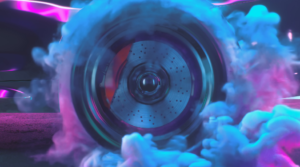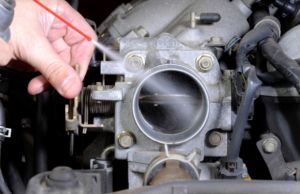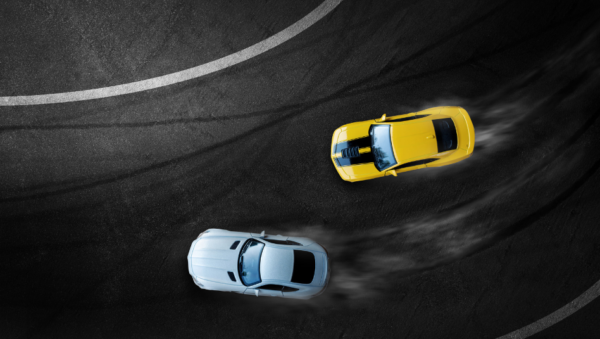Improve throttle response. Our cars are more than just a means of mobility, gliding over the highways with assurance and comfort.
They are our dependable friends who accompany us to work, play, and all other activities.
But to keep them operating well, our cars require a little TLC, much like our health does. Maintaining our cars in top condition through routine inspections and preventative maintenance not only enhances their lifespan but also ensures our safety while driving.
Enhancing responsiveness is an essential part of driving that has an enormous influence on the entire experience.
A rapid and smooth throttle response may significantly alter a car’s handling and feel on the road.
It can be annoying to drive with a slow throttle response since it is challenging to maintain control of the car and react to shifting road conditions.
Fortunately, there are several techniques to enhance throttle responsiveness, whether you operate a new or pre-owned vehicle.
Replacing the air filter, fuel filters, spark plugs, wires, and battery fluid level are things you can do to help improve throttle response.
In this guide, we walk you through the detailed steps on how to improve throttle response.
Read more: Water Recovery Rate
Unleash Your Vehicle’s Power: Enhancing Throttle Response

Throttle response is the time it takes for your engine to react to your accelerator pedal input. Improving throttle response can make your car feel more responsive and agile, and it can also improve your fuel economy.
There are a number of ways to improve throttle response that will increase performance and optimize sensitivity, including:
- Keep up with regular maintenance. This includes changing your oil and air filters regularly, as well as cleaning your throttle body and fuel injectors. A dirty air filter or fuel injector can restrict airflow and fuel delivery, which can lead to sluggish throttle response.
- Install a cold air intake. A cold air intake delivers cooler air to your engine, which can improve combustion and throttle response.
- Upgrade your throttle body. A larger throttle body can allow more air to flow into your engine, which can improve throttle response.
- Get a tune-up and tuning techniques. A qualified tuner can adjust your engine’s computer to improve throttle response and overall performance.
- Use a throttle response controller. A throttle response controller can electronically adjust the signal from your accelerator pedal to your engine, resulting in quicker throttle response.
MORE TOPICS
Elasticity allows us to improve our understanding of supply and demand.
Poor blood circulation in the legs
Drive Smoother and Faster: Throttle Performance Tips

Here are a few tips for driving with improved throttle response and optimizing sensitivity:
- Smoothly apply pressure to the accelerator pedal. Don’t stomp on the pedal, as this can cause your tires to spin and waste fuel.
- Use the right gear. When accelerating, use a gear that is low enough to keep your engine in the powerband.
- Shift gears smoothly. Avoid shifting gears too quickly or too slowly, as this can disrupt your acceleration.
- Anticipate traffic conditions. Look ahead and anticipate when you need to accelerate or slow down. This will help you avoid having to make sudden throttle changes.
Techniques for a Better Response
Here are a few advanced techniques for improving throttle response and maximizing acceleration:
- Throttle blipping. Throttle blipping is a technique that can be used to match the engine speed to the transmission speed when downshifting. This can help to smooth out the downshift and reduce the risk of wheel lockup.
- Heel-and-toe shifting. Heel-and-toe shifting is a technique that allows you to brake and downshift at the same time. This can be useful for performance driving, as it allows you to keep the engine in the powerband and avoid losing momentum.
- Trail braking. Trail braking is a technique that involves applying light brake pressure while cornering. This can help improve traction and reduce understeer.
Read more: How To Improve 1.5-mile Run Time in a Month
Mastering Throttle Sensitivity: A Comprehensive Guide

Throttle sensitivity is the degree to which your engine responds to accelerator pedal input. Some cars have more sensitive throttles than others.
If your car has a very sensitive throttle, it can be difficult to control smoothly. If your car has a very sluggish throttle, it can make it feel like you’re driving a slug.
The ideal throttle sensitivity is somewhere in between. You should be able to apply pressure to the accelerator pedal and have your car respond smoothly and predictably.
If your car’s throttle sensitivity is not to your liking, there are a few things you can do to adjust it and boost control:
- Use the throttle response controller. A throttle response controller can electronically adjust the signal from your accelerator pedal to your engine, resulting in a more or less sensitive throttle response.
- Get a tune-up. A qualified tuner can adjust your engine’s computer to change the throttle sensitivity.
- Change your driving style. If you have a very sensitive throttle, try to be more gentle when applying pressure to the accelerator pedal. If you have a very sluggish throttle, try to be more aggressive when applying pressure to the accelerator pedal.
Simple and effective steps to improve throttle response
You can take the following steps to improve throttle response and throttle upgrades:
- Verify the air intake system’s cleanliness and debris-freeness. If the air filter is unclean, replace it.
- Upgrade engine management software: throttle responsiveness may be improved by reprogramming the engine control unit (ECU) or installing a performance chip.
- Install a throttle body spacer. This component extends the distance between the throttle body and the intake manifold, enhancing airflow and improving throttle response.
- Changing the throttle cable can improve throttle responsiveness. The throttle cable may be worn out or strained. We may replace it with a superior line to enhance throttle responsiveness.
- Thoroughly clean the throttle body. Carbon accumulation over time can block the throttle body, resulting in a poor throttle response. They may clean the throttle body to return it to its original state.
Read About: 11 Proven Strategies for an Enriched Dating Life
Throttle Modulation Methods

Throttle modulation is one way to improve throttle response, it is the ability to control the amount of throttle you are applying smoothly and precisely.
This is an important skill for any driver, but it is especially important for performance drivers.
There are a few things you can do to improve your throttle modulation skills:
- Practice makes perfect. The more you drive, the better you will become at modulating the throttle.
- Pay attention to how your car responds to throttle input. Notice how the engine speed and vehicle speed change as you apply and release the throttle.
- Use your senses. Listen to the sound of the engine and feel the vibration of the chassis. This can help you sense how much throttle you are applying and how the car is responding.
Read More: Improve FM Signal on Radio with Wire Antenna
The Best Mods to Improve Throttle Response
One of the most effective mods of throttle response is a cold air intake system.
Cold air intake, which increases engine airflow for improved throttle response, and performance exhaust, which lowers back pressure and enhances engine breathing, are some of the finest upgrades to do this.
The engine management system (EMS) upgrade reprograms the engine control unit for improved throttle response and overall performance.
Throttle body upgrade, which increases the diameter of the throttle body for more air intake. Fuel pressure regulator promotion ensures the engine is getting the right amount of fuel for optimal performance.
The throttle responsiveness and general driving experience may improve when you make these changes.
HOW AYRTON SENNA USED THE THROTTLE TO TEST FOR THE LIMITS OF GRIP
Ayrton Senna was known for his unique and aggressive throttle technique, particularly on corner exit.
He would often “stab” at the throttle, applying quick, sharp jabs to the pedal.
This technique was not only visually distinctive, but it was also highly effective in helping Senna find the limits of grip.
There are a few reasons why Senna’s throttle technique was so effective in testing grip. First, it allowed him to apply power more precisely and gradually.
By quickly stabbing at the throttle, he could avoid overloading the rear tires and causing them to break traction.
Second, Senna’s technique allowed him to feel the car’s response to throttle input more clearly. This was especially important in slippery conditions or when driving on tires that were near the end of their life.
Senna’s throttle technique was also a way for him to “communicate” with the car.
He would often listen to the sound of the engine and feel the car’s response to throttle input to gauge how much grip he had available.
This allowed him to push the car to the limit without losing control.
Maximizing Throttle Response
To maximize throttle response, you can combine the tips and techniques above.
For example, you can install a cold air intake, upgrade your throttle body, and get a tune-up. You can also use a throttle response controller and practice throttle modulation skills.
Improving throttle performance
If you are looking for a more affordable way to improve throttle response, there are a few things you can do:
- Clean your air filter and throttle body. A dirty air filter or throttle body can restrict airflow and fuel delivery, which can lead to sluggish throttle response.
- Use a higher-octane fuel. Higher-octane fuel burns cleaner and can improve throttle response.
- Change your driving style. Be more gentle when applying pressure to the accelerator pedal, and try to keep the engine in the powerband.
How do you improve your car’s throttle response yourself?

How can you enhance your car’s throttle response on your own? Here are some actions you can take to improve your vehicle’s throttle responsiveness:
- Throttle Body Cleaning: Use a throttle body cleaner to remove any accumulated debris that might obstruct the throttle body and restrict airflow.
- Air Filter Replacement: To boost throttle responsiveness, replace your air filter and ensure it is free of dirt. Consider upgrading to a high-flow air filter for even better performance.
- Tire Maintenance: Maintain proper tire inflation for optimal handling and traction.
- Engine Health Check: Ensure your engine is in good condition, as engine problems can impair throttle response.
- Engine Bay Cleanup: Enhance the airflow and throttle responsiveness by decluttering the engine bay and removing any unnecessary items.
- Sport Mode Engagement: If your vehicle offers a sport mode, engage it to increase throttle responsiveness.
- Professional ECU Tuning: Consider having a professional tune the vehicle’s computer system (ECU) to improve efficiency and enhance throttle response.
Note: Before making any modifications, be sure to consult your car’s owner’s manual and, if necessary, seek the advice of a qualified technician.
Conclusion
In conclusion to our ultimate guide on how to improve throttle response, Enhancing throttle response can make your car feel more responsive and agile, and it can also improve your fuel economy.
There are a number of ways to improve throttle response, including regular maintenance, installing performance upgrades, and using throttle modulation techniques.
FAQs
What affects throttle response?
A number of factors can affect throttle response, including: Engine condition Air intake system. Fuel delivery system. Throttle body size. Engine tune Driver input
Is the throttle response good?
A good throttle response means that your car will respond quickly and predictably to your accelerator pedal input. This can make your car feel more responsive and agile, and it can also improve your fuel economy.
What does a throttle response enhancer do?
A throttle response enhancer is a device that can electronically adjust the signal from your accelerator pedal to your engine. This can result in a quicker throttle response.
Can you change the throttle sensitivity?
Yes, you can change throttle sensitivity. There are a few ways to do this, including: Using a throttle response controller. Getting a tune-up. Changing your driving style
Does throttle affect speed?
Yes, throttle affects speed. The more throttle you apply, the faster your car will go.
Why is my car not picking up speed when accelerating?
There are a number of reasons why your car may not be picking up speed when accelerating. Some common causes include: Clogged air filter Dirty throttle body. Faulty fuel injectors Engine problems. Transmission problems
Does throttle control increase acceleration?
Yes, throttle control can increase acceleration. The more precise you are with your throttle control, the faster you will be able to accelerate.

